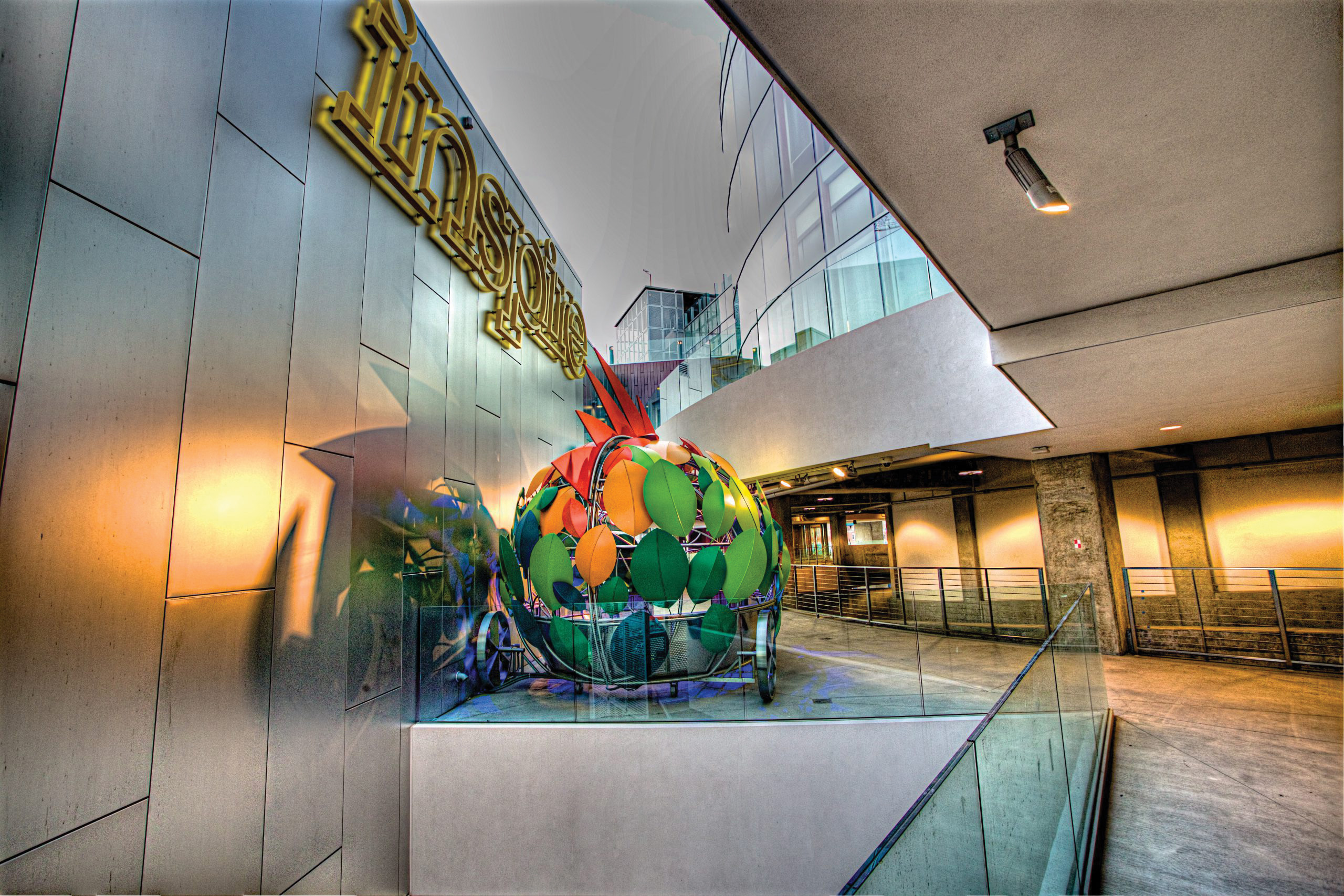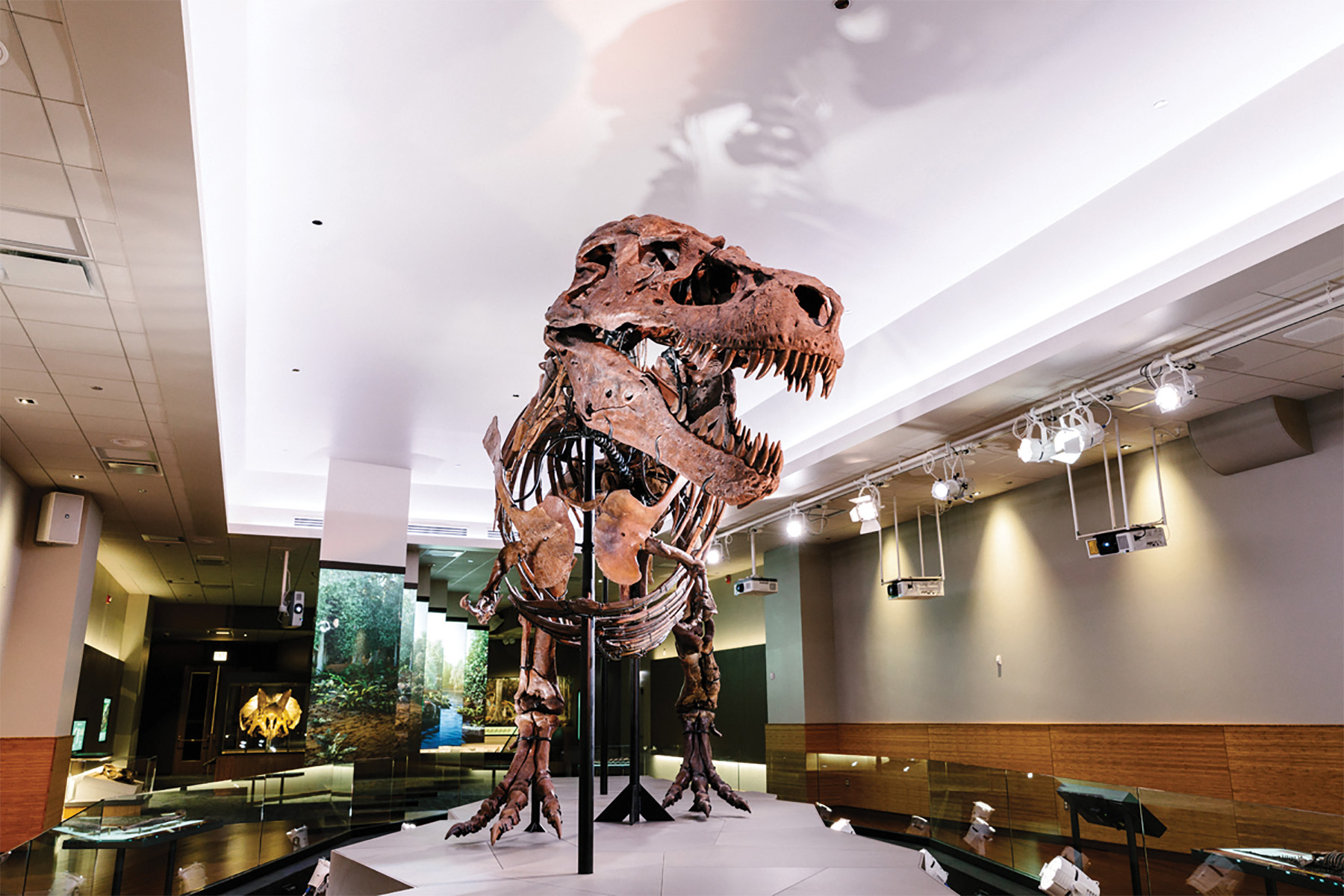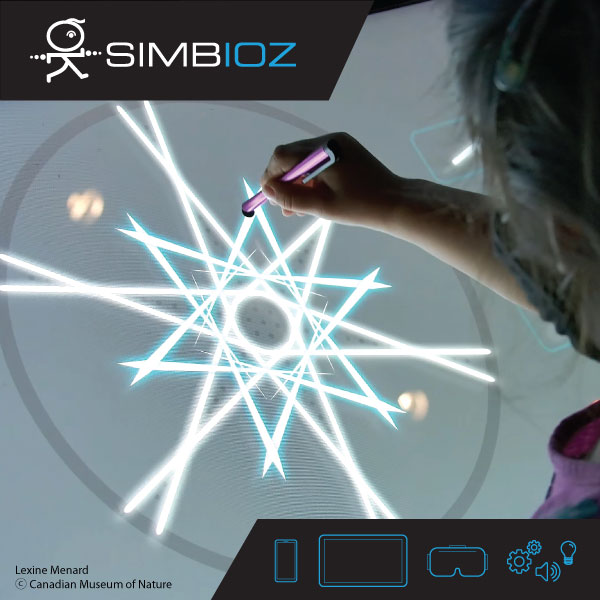
Located in downtown Boise, ID, JUMP is a huge community space that includes a park, recording studio, test kitchen, event space, and museum. ETC Mosaic controls the outdoor lighting and ties into a Paradigm control system that oversees the indoor lighting giving JUMP an important amount of flexibility to their lighting options that is complimentary of such a dynamic space.
The Science of Great Exhibit Lighting: Colour and Quality
Located in downtown Boise, ID, JUMP is a huge community space that includes a park, recording studio, test kitchen, event space, and museum. ETC Mosaic controls the outdoor lighting and ties into a Paradigm control system that oversees the indoor lighting giving JUMP an important amount of flexibility to their lighting options that is complimentary of such a dynamic space.
Michael Harris
Colour is not a constant. Light and the colour that is reflected to our eyes can change and adjust. Affected by the environment, the time of day as well as our own capacity to perceive. It’s important to understand our eyes are sensitive to the quality and colour of light particularly when presenting artefacts. So what is the best way to light museum exhibits? There is no simple answer but here I will explain some of the factors that should be considered.
Light Emitting Diodes (LED)
LED as opposed to incandescent lighting, allows the manipulation of a source’s spectral content in a manner that was not previously practical. With the arrival of multicolour emitter arrays and other blended LED source options, the perceptual ‘whiteness’ of light can be adjusted to specific projects’ needs, increasing options for designers and end users. While perhaps a larger upfront cost, the flexibility, accessibility, lower energy cost and long-lasting nature of LED means it is likely a good bet for most Canadian museums.

SUE the T-Rex is located at Field Museum in Chicago. The lighting and AV presentation for Sue the T-Rex’s new home required complex integration of controls and a variety of fixture types. All photos provided by the author.
With lighting products capable of so much flexibility the questions then becomes, how do we determine the right light quality to render true colours? After all, the benefit of light is not the light itself, but the objects and spaces it illuminates.
Typically, the standard light source that we use to compare other sources is the sun.
Some light sources render colour better than others when compared to sunlight. With this in mind, begin by turning the lights off, and seeing what type of natural light is available and therefore the amount and type of artificial light you will need to add.
Consider the use of motion sensors, light sensors, and output level controls (dimmers). The artifacts and displays don’t need to be illuminated when no one is viewing the object. Are there windows in the exhibit area allowing natural light to filter in? Consider using a light sensor to harvest the daylight and control the level of the exhibit lighting. If the windows face a specific direction, say south — then a sensor and a colour temperature control would be appropriate. As the sun shifts seasonally, it’s possible to tailor both level and colour temperature to match the daylight. This control programming, including time of day preset levels, is all possible utilizing digital architectural controls.
The benefit of this customization is multi-fold. Reducing the amount of artificial light used will conserve energy, preserve the object and provide a more consistent experience for museum visitors.
Correlated Colour Temperature (CCT)
There are several different methods to test the quality of light. Consideration should be given to these methods when designing the lighting and controls for your exhibit.
Correlated Colour Temperature (CCT) is measured in degrees Kelvin and indicates the warm or cool nature of light.
A white light can have a warmer colour (3000k) which looks yellowish, amber, or orange to our eyes, or it can be a cool white (6500k) which will look bright white or even slightly bluish white. The colour temperature of sunlight would be cooler at noon than during sunset.
Considering which colour temperature to use in your exhibition lighting comes down to atmosphere and the overall colour composition of the exhibit space. It would not be recommended to mix cool and warm lighting throughout, but varying degrees between overhead and artefact lighting is fine if the overall composition is at the same end of the spectrum.
lighting can be used to convey or augment a cozy or home-like atmosphere particularly useful for historic house properties or where the artwork and items on display have a lot of wood, red, orange, etc. that you wish to highlight.
Cool lighting is typically used in larger gallery spaces, or in spaces with access to a large amount of natural daylight and will emphasize pieces with green and blue tones. Being able to adjust your light temperature can be very helpful if your facility runs evening events, creating a cozy atmosphere and aligning with the warmer light of the evening sun.
SUE the T-Rex is located at Field Museum in Chicago. The lighting and AV presentation for Sue the T-Rex’s new home required complex integration of controls and a variety of fixture types. All photos provided by the author.

The Anderson Abruzzo Albuquerque International Balloon Museum in Albuquerque, NM, lets the visitor feel the magic of hot air balloons. With modernized and more energy-efficient lighting control the balloons seem as though they might float away.
Fidelity and Colour Rendering
The Colour Rendering Index (CRI), Colour Quality Scale (CQS) and IES TM-30-15 Fidelity Index are all ways of measuring how colour looks to the human eye, when compared to a constant light source like the sun.
Colour science research shows that the IES method is the most accurate measurement of colour rendering of these methods but is frequently used in conjunction with CRI.
The Fidelity Index uses a scale of 0 to 100 and 99 colour evaluation samples that were chosen from real world objects to give a statistically representative and reliable metric in showing how accurate the colours will be shown.
For ease of reference, the 99 samples are divided into seven categories: nature, skin colour, textiles, paints, plastics, printed material and colour systems. This categorization is beneficial to LED lights because the testing can be application specific. If an architect, designer, or curator is looking to show certain paint colours, they would mainly look at the paint colours category of the Fidelity Index.
Science in Practice
In practice, lighting also requires a good degree of common sense and observation. When lighting different spaces the goal is always to represent the objects faithfully to their true colour and to complement, not compete with the natural light that may be available to you.
In planning the lighting for the Anderson Abruzzo Albuquerque International Balloon Museum in Albuquerque is was important to extend the quality of cool, outdoor daylight within the artificial lighting as well. The project made use of several automated controls that allowed the light to record and adjust itself to complement the natural light that fills the space through large windows.

Electronic Theatre Controls (ETC), a lighting company based in Madison, WI, broke ground on a large addition to their headquarters that included offices, meeting rooms, and lounge space. The design utilizes salvaged shipping containers and multiple lines of their own architectural controls and fixtures.
Additionally, this was important to the subject matter as well. The goal of presenting a hot air balloon display being to make them seem as though they are floating in the sky.
Meanwhile, in presenting SUE the T-Rex at Field Museum in Chicago presented the opposite challenge of almost no natural daylight and the need to present both the colour and details of this important specimen accurately but also to incorporate a moody effect worthy of one of the Museum’s main attractions.
Next time you are experiencing your museum spaces, I hope that you will take a moment to appreciate how the lighting is contributing to your experience, and in some cases, how it might be improved. Curiosity is an important part of this work, and if you find yourself overwhelmed with acronyms of good lighting design, you know where to find me. M
CETEC Group Inc. represents the best professional and commercial lighting, AV, and operational equipment to deliver the right products for all projects.
